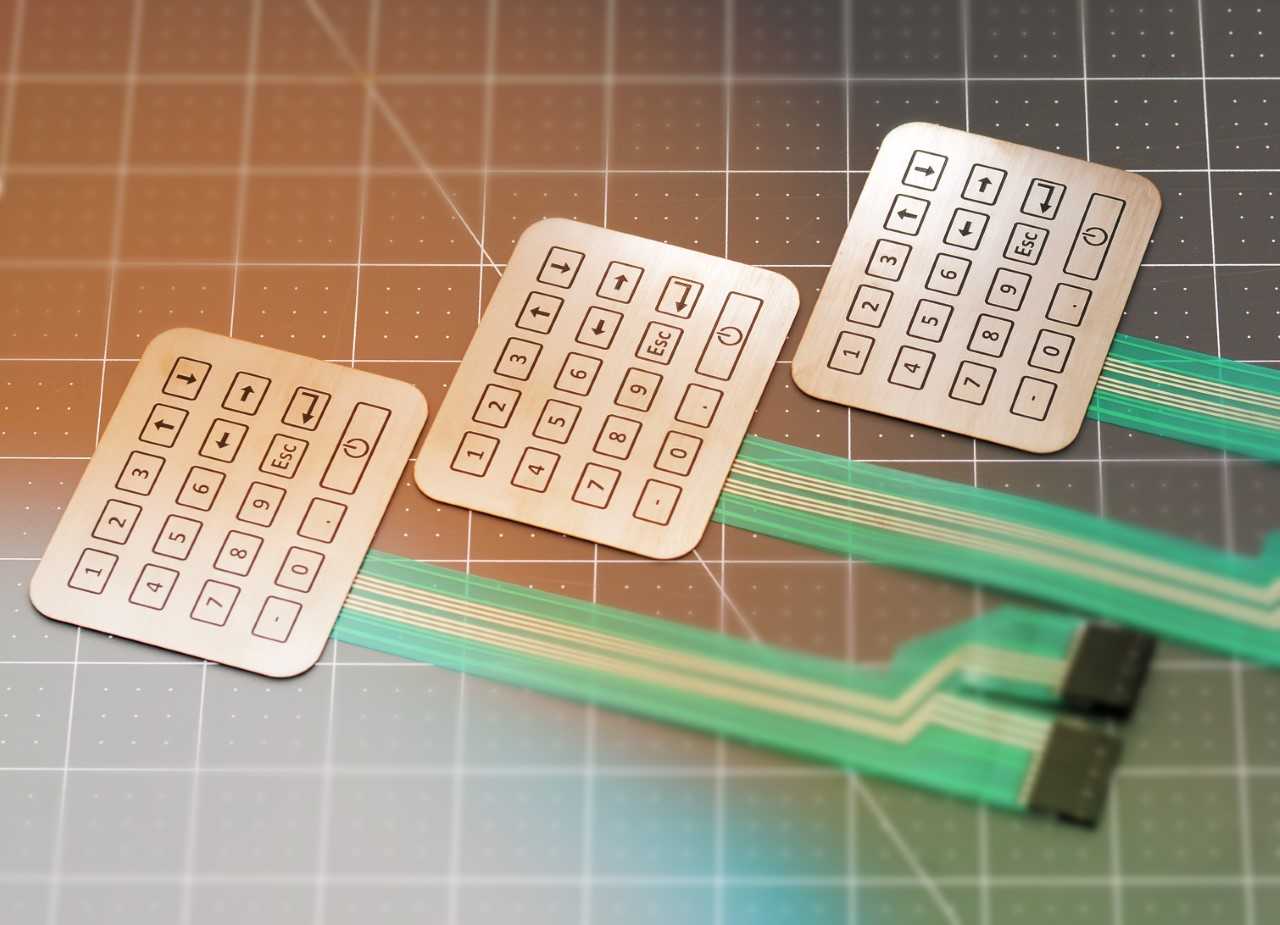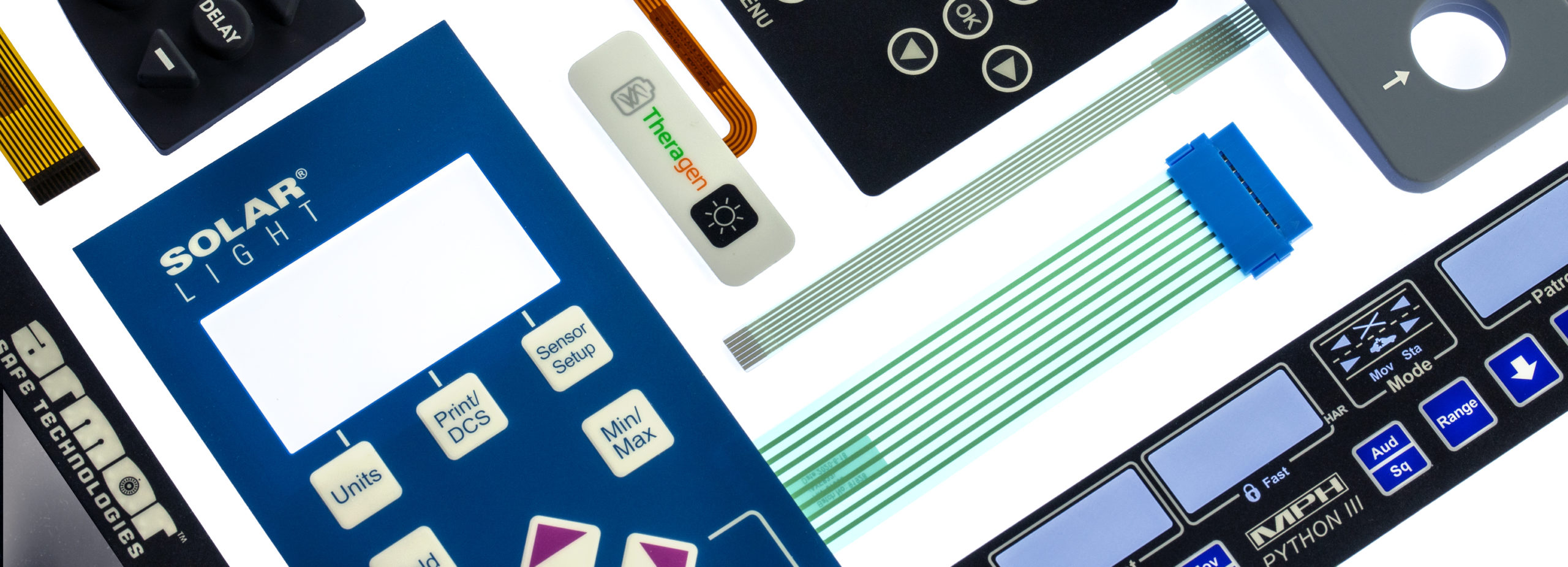Top brands often choose a skilled membrane switch manufacturer to deliver reliable results.
Everything About Membrane Layer Switch Over: Recognizing Its Design and Capability
When you think concerning the control interfaces in modern tools, membrane layer switches typically come to mind. Let's discover what sets membrane layer changes apart from various other control systems.
What Are Membrane Layer Switches?

Membrane layer buttons can likewise be customized regarding form, size, and graphics, allowing makers to develop unique interfaces customized to certain items. Overall, membrane layer switches play a significant duty in improving user experience throughout a broad array of applications.
Just How Membrane Layer Switches Over Job
When you push a key on a membrane switch, it triggers a straightforward yet efficient device. membrane switch manufacturer. The top layer, typically made of versatile material, presses down onto a conductive layer beneath it.
You'll discover that the tactile comments varies based on the button layout, supplying either a soft click or an extra pronounced feedback. When you release the secret, the membrane go back to its initial position, reopening the circuit and quiting the signal. This process takes place nearly immediately, making sure a responsive customer experience.
Membrane switches are prominent as a result of their toughness and resistance to dirt and moisture, making them ideal for different applications, from house home appliances to medical gadgets. Understanding this operation aids you appreciate their widespread use.
Key Parts of Membrane Layer Switches
Comprehending the key components of membrane layer buttons is essential for realizing their capability and design. At the core, you'll locate the visuals overlay, which supplies the visual user interface for customers. Under that, there's a spacer layer that divides the circuit layers, guaranteeing that they don't make get in touch with until pushed. The circuit layer is where the magic happens; it contains conductive traces that finish the circuit when you press the button. One more important element is the sticky support, enabling the button to abide by surfaces securely. Finally, the safety layer guards versus environmental elements and wear, expanding the button's life-span. Each part plays a substantial duty in ensuring trustworthy performance and individual communication. By comprehending these elements, you'll get understanding right into exactly how membrane switches operate and their importance in numerous applications.
Products Utilized in Membrane Switch Layout
The efficiency and durability of membrane switches over greatly depend on the materials utilized in their style. You usually experience polyester and polycarbonate as primary substrates because of their superb toughness and flexibility. These materials stand up to scratches and chemicals, making them suitable for requiring atmospheres.
The conductive layers commonly make use of silver or carbon, picked for their reliability and conductivity. membrane switch manufacturer. Silver gives remarkable performance, while carbon is an affordable choice. For the overlay, you may think about a matte or glossy finish, depending on your aesthetic needs and user experience
Make specific to choose adhesives that stand up to environmental elements like temperature level and moisture. Selecting the appropriate materials will guarantee your membrane button stands the examination of time.
Design Factors To Consider for Membrane Switches
While creating membrane layer switches, it's important to take right into account different aspects that affect their performance and individual experience. Begin by focusing on the format and button dimension; make specific they're see instinctive and simple to navigate.
Do not ignore the graphic design; clear labeling and shade comparison are considerable for visibility. Confirm your style suits environmental elements, like dampness or temperature level variations, which might impact efficiency. Ultimately, bear in mind the importance of screening prototypes with real customers to gather responses and make needed adjustments. This repetitive process helps you refine the design, confirming it meets both practical and aesthetic demands successfully. By meticulously thinking about these elements, you'll produce a membrane layer switch that enhances usability and satisfaction.
Applications of Membrane Layer Buttons
Membrane layer switches are functional components discovered in different applications, from industrial tools to customer electronic devices. You'll see their impact in equipments that need long lasting interfaces and in tools that take advantage of smooth styles. Recognizing these applications aids you value the capability and usefulness of membrane layer switches in day-to-day modern technology.
Industrial Tools Usage
When you're looking to enhance the performance of industrial devices, membrane buttons provide a dependable solution that integrates toughness with easy to use style. These buttons are best for harsh environments, giving resistance to dirt, moisture, and chemicals. You'll discover them in control panels for making machines, cooling and heating systems, and clinical gadgets, where accuracy and responsiveness are important. Their low profile suggests they fit flawlessly into various devices, saving useful room while keeping convenience of usage. With personalized graphics and backlighting alternatives, you can develop an user-friendly interface for drivers, enhancing performance and security. And also, their lengthy lifespan reduces maintenance costs, making them a wise financial investment for your industrial applications. Welcome membrane buttons to streamline your procedures and improve total performance.
Consumer Electronic Devices Integration
In the domain name of customer electronics, membrane layer buttons play a vital role in enhancing user communication and gadget performance. Membrane layer switches likewise assure toughness and resistance to dirt and dampness, expanding the life-span of your electronics. By selecting membrane buttons, you improve not simply you could try this out the performance but likewise the style of your gadgets, making everyday communications smooth and pleasurable.
Benefits and Drawbacks of Membrane Layer Switches
While membrane layer switches supply a range of advantages, they also include some downsides that you should take into consideration. One significant benefit is their small style, making them excellent for space-constrained applications. They're also cost-efficient, providing a long lasting option with a low manufacturing cost. On top of that, their smooth surface is very easy to tidy, improving health in index atmospheres like hospitals.

Nonetheless, there are negative aspects. Membrane layer switches can have a much shorter lifespan contrasted to mechanical buttons, especially under heavy use. They can additionally be less tactile, which might impact user feedback during procedure. Moreover, if damaged, repairing them can be difficult and typically calls for complete replacement. Ultimately, their sensitivity to severe temperatures and ecological conditions may limit their performance in particular setups. Stabilizing these advantages and disadvantages will aid you identify if membrane switches are the right fit for your task.
Often Asked Concerns
Exactly How Lengthy Do Membrane Layer Changes Typically Last?
Membrane layer switches commonly last between 5 to one decade, relying on use and ecological problems. You'll want to evaluate aspects like wear, direct exposure to dampness, and temperature level changes to evaluate their long life successfully.
Can Membrane Changes Be Custom-made for Specific Styles?
Yes, you can personalize membrane layer buttons to fit specific layouts (membrane switch manufacturer). You'll have the liberty to choose colors, forms, and layouts that match your task's demands, ensuring they mix seamlessly with your general visual
What Is the Cost Variety for Membrane Switch Over Production?
The expense array for membrane switch manufacturing generally drops between $1 and $10 per device, depending upon elements like layout complexity, quantity, and materials. You can obtain quotes from producers to discover the most effective alternative.

Are Membrane Layer Switches Waterproof or Immune?
Membrane switches can be made to be waterproof or immune, depending on materials utilized and building and construction methods. If you require them for damp settings, guarantee you define those demands throughout the style process.
Just How Do Membrane Layer Switches Over Compare to Conventional Buttons?
Membrane buttons are typically thinner and a lot more flexible than typical switches, supplying a smooth layout. They're usually easier to clean and incorporate, yet may not supply the responsive feedback you're used to with mechanical alternatives.
Verdict
